#photo ark by joel sartore
Text
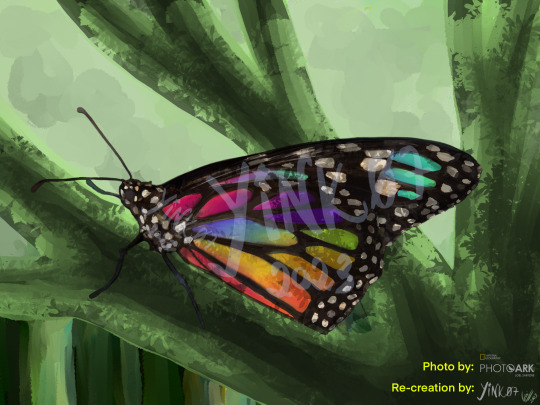
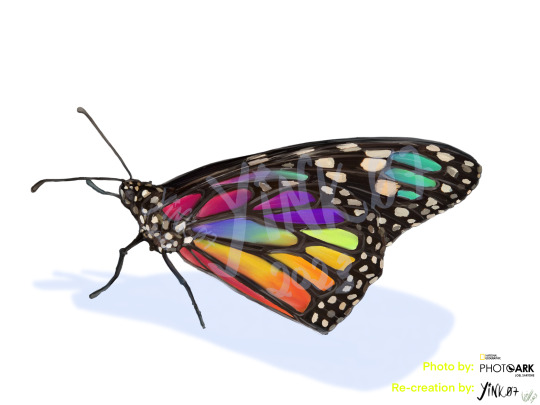
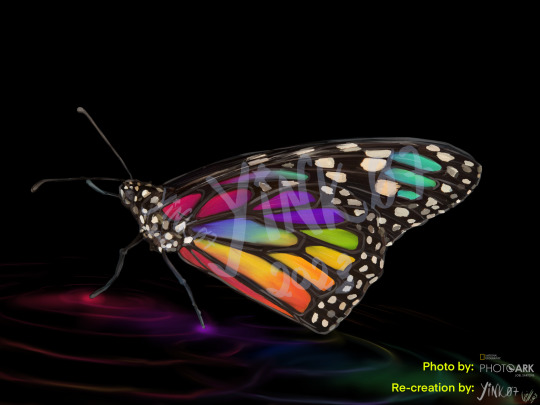
Re-creation of a photo from Joel Sartore [ PhotoArk | NationalGeographic ]
#re-creation#re creation#joel sartore#national geographic#photo ark#national geographic photo ark#photo ark by joel sartore#monarch butterfly#butterfly#rainbow butterfly#rainbow#background#yink07’s backgrounds
3 notes
·
View notes
Text
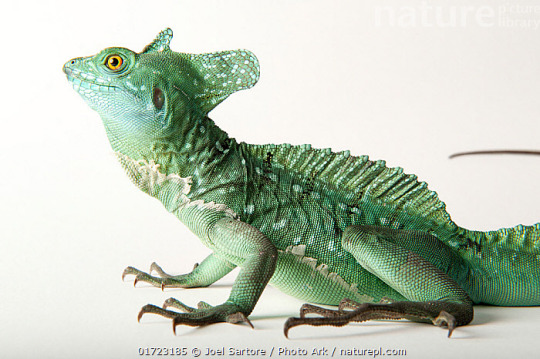
Green crested basilisk (Basiliscus plumifrons) portrait, Buffalo Zoo. Captive, occurs in Central America.
Photographer: Joel Sartore / Photo Ark
#joel sartore#photographer#photo ark#green crested basilisk#basiliscus plumifrons#buffalo zoo#central america#reptile#nature#animal
20 notes
·
View notes
Photo
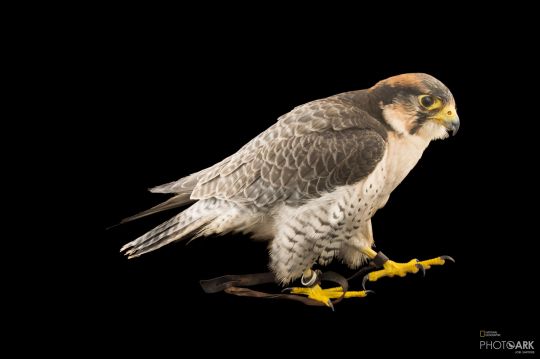
Animals of the Photo Ark - Lanner Falcon (Falco biarmicus)
Family: Falcon Family (Falconidae)
IUCN Conservation Status: Least Concern
Although small by the standards of most birds-of-prey, the Lanner Falcon is one of the largest falcon species (typically growing to be 30-50cm/11.8″-19,7″ in length and weighing around 700-900 grams/24.5-32 oz.) Most common in open grasslands and savannas, it is widely distributed across Sub-Saharan Africa, and may also be found in more scattered populations north of the Sahara as far as southern Europe. While many falcons rely on dive-bombing prey to capture and subdue it, the Lanner Falcon instead hunts through horizontal pursuits, and as such targets airborne prey such as bats and smaller birds. Like many falcons, they are monogamous and, upon forming a pair, will remain together for the rest of their lives, cooperating to protect a shared territory, capture prey and raise chicks. This species breeds in early July and rarely builds its own nest, typically moving into natural crevices or the abandoned nests of similarly sized birds and producing a clutch of 2-4 brown-speckled eggs which are incubated by both parents working in shifts, with one parent caring for the eggs while the other hunts. The eggs hatch around 32 days after being laid, and fledge a further 42 days later (becoming independent just in time to benefit from the large number of migratory birds travelling to Africa and southern Europe to overwinter.) Although Lanner Falcons remain abundant across most of Africa, European and South African populations are in decline due to recreational hunting, habitat loss, accidental poisoning and the collection of chicks for use in the falconry trade.
-----------------------------------------------------------------------------
The photo above is from the National Geographic Photo Ark, and was taken by Joel Sartore. To see more of Sartore’s amazing work and support the Photo Ark, follow the link below:
https://www.nationalgeographic.org/projects/photo-ark/?locale=en
#lanner falcon#falcon#falcons#bird of prey#birds of prey#falconiformes#zoology#biology#Ornithology#wildlife#african wildlife#european wildlife#raptor#raptors#joel sartore#photo ark
286 notes
·
View notes
Link
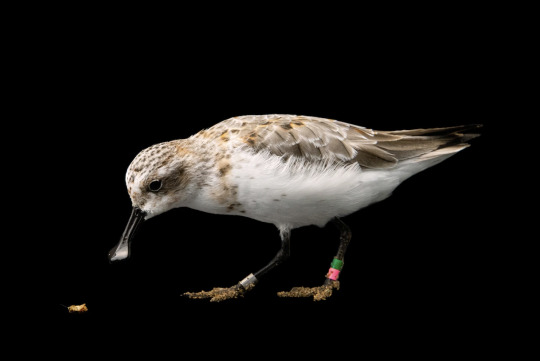
A spoon-billed sandpiper chases a cricket at the Slimbridge Wetland Centre in England. PHOTOGRAPH BY JOEL SARTORE, NATIONAL GEOGRAPHIC PHOTO ARK
Excerpt from this story from National Geographic:
For his 60th birthday on June 16, Joel Sartore celebrated with another milestone: Photographing the 13,000th species in National Geographic’s Photo Ark.
He captured photos and video of the critically endangered spoon-billed sandpiper, a European and Asian shorebird with a distinctive spoon-shaped beak, at the Slimbridge Wetland Centre in England.
The birds’ caretakers spent more than a month training the animals to walk on a blackboard by covering it with sand (to imitate its natural habitat) and feeding them baby crickets as treats.
Sartore was then able to photograph the birds against the Photo Ark’s signature black-and-white backgrounds, which puts all species on the same footing, so to speak.
“Most of the animals that we share the planet with are not tigers or gorillas or polar bears or giraffes,” says Sartore. “They’re small things like the star-nosed moles and worms and salamanders and turtles. These are animals that make the world turn, and with this portrait process, we give all species an equal voice.”
4 notes
·
View notes
Text



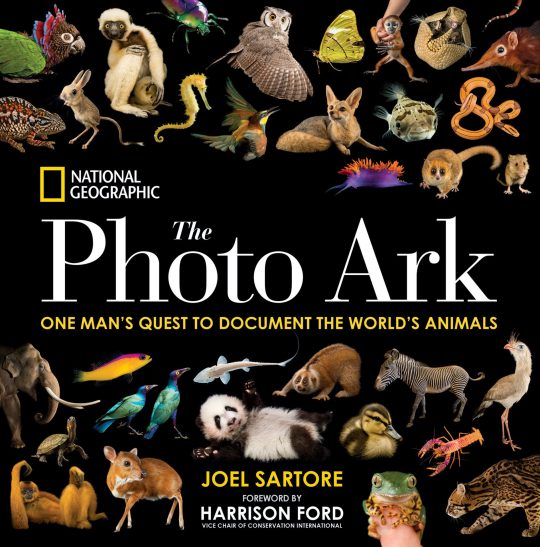
The Photo Ark - Introduction
- Joel Sartore
To find out more about the Photo Ark and over 11,000 species, visit us at joelsartore.com
& follow us on instagram: instagram.com/joelsartore/
Photo Ark Motion Grids
vimeo
Animal Video Portraits
A collection of stunning video portraits of rare and amazing animals.
👇 📽️ 👇
vimeo
<iframe src="https://player.vimeo.com/video/118534573?h=dcd2beea8d&title=0&byline=0&portrait=0" width="900" height="506" frameborder="0" allow="autoplay; fullscreen; picture-in-picture" allowfullscreen></iframe>
https://vimeo.com/118534573
0 notes
Text
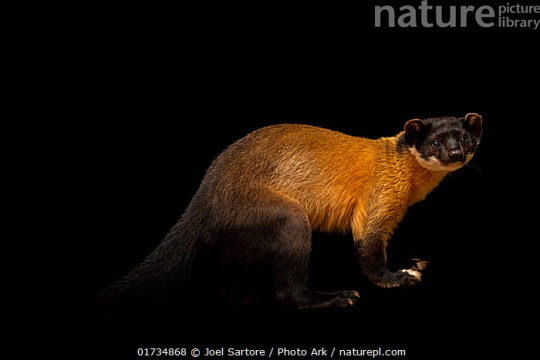

Siberian yellow-throated marten (Martes flavigula aterrima)
📸 Joel Sartore / Photo Ark
107 notes
·
View notes
Text
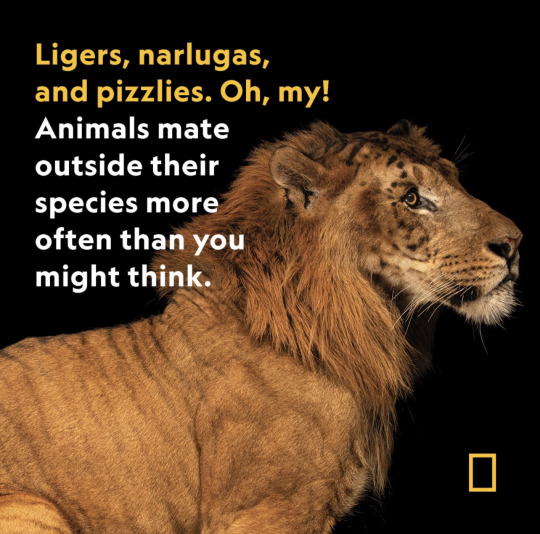
Interbreeding between animals of different lineages is widespread in nature-and mav reveal some of the mysteries of evolution. Photograph by Joel Sartore, National Geographic Photo Ark
149 notes
·
View notes
Text
TO ALL MY ARTISTS OUT THERE
if you ever need references for drawing realistic animals, check out Joel Sartore’s Photo Ark Project!
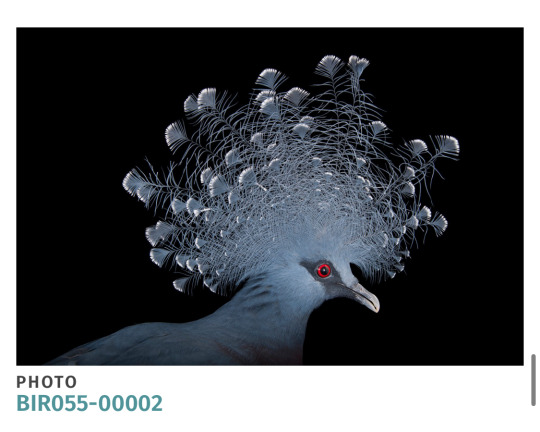
It has plain background, high quality images of pretty much every animal you can think of ( 15,325 different species), with detail shots and multiple angles, and it’s all free online!
#This man is a lifesaver#He’s spent 25 years photographing animals for this project and he’s still going#Art#art tips#photo ark#Animals#Furry art
2 notes
·
View notes
Text

The Narragansett Turkey (Pictured, an animal at the Knoxville Zoo) is an historic breed Named after Rhode Island's Narragansett Bay. It's a cross between the wild turkey and domestic turkey. Photograph By Joel Sartore, National Geographic, Photo Ark
Wild Turkeys Are at a Record High in New England—But Not All are Thankful.
When Turkeys were Reintroduced about 50 Years Ago, No One Dreamed the Birds Would Thrive in the Suburbs. And now, They’ve Become a Nuisance.
— Published: November 25, 2019 | Updated: November 20, 2023 | By Brian Handwerk
Amherst, New Hampshire— Wild turkeys are a familiar sight throughout New Hampshire, where flocks strut along roadsides and wander through backyards.
Ted Walski knows this better than anyone: He’s the man responsible.
In 1975, the biologist for New Hampshire Fish and Game released 25 turkeys from the back of his truck in Walpole, a town in the western part of the state. It was part of a reintroduction effort to bring back a species that had been wiped out in New England before the Civil War, thanks to a one-two punch of vanishing forests and unchecked hunting.
“Originally, I never thought it would get beyond a few thousand turkeys,” says Walski, who spent nearly 50 years working with the birds before retiring in 2019.
Instead, New Hampshire’s turkey population has exploded beyond all expectations, and now hovers around 45,000 animals—the highest since reintroduction, and probably the most the state can handle. Reintroduction efforts in neighboring states and around the country have created a similar story—there are 70,000 wild turkeys in Maine, up to 50,000 in Vermont, and more than 30,000 in Massachusetts—all of which totals up to about six million animals reproducing in every state but Alaska.
So what made the wild turkey one of the most successful wildlife reintroduction programs in American history? Most likely, it’s due to the bird’s surprising—and unexpected—ability to live among humans. In the suburbs, turkeys can take advantage of edge habitat, like woods and open spaces, and dine on a never-ending buffet of food provided by people—particularly birdseed. It doesn’t hurt that native predators, such as wolves and cougars, have also largely disappeared from most parts of the turkey’s range.
But not everyone is thankful for the New England turkey boom. The notoriously bold birds are a nuisance, disrupting traffic and pecking at front doors (or, a police station a few days before Thanksgiving), as well as potentially dangerous: In 2019, a 35-year-old pregnant woman was attacked by turkeys on the streets of Cambridge, Massachusetts—twice. As conflicts between these 20-pound birds and people are on the rise, particularly during the spring breeding season, wildlife officials are trying to cope with the reality that the turkey is here to stay.
“I would wager that 40 years ago nobody expected there to be booming turkey flocks in suburban and urban areas,” says David Scarpitti, a wildlife biologist with the Massachusetts Division of Fisheries and Wildlife. “But it’s pretty obvious that they aren’t just passersby.”

A flock of wild turkeys walk on a suburban driveway in West Newbury, Massachusetts. Photograph By Frank Vetere, Alamy
How Turkeys 🦃 🦃 🦃 Came Back
In 1634, William Wood noted the abundance of turkeys in his book “New Englands Prospect,” writing that “sometimes there will be forty, three score, and a hundred in a flocke, sometimes more and sometimes lesse.” According to Wood, unregulated hunters in the 17th century might kill 10 or 18 turkeys a day, a practice that essentially doomed the northeastern populations.
In the 1960s and 1970s, many U.S. states reintroduced turkeys back into their native habitat, where the omnivores play a vital role of keeping several plant and invertebrate populations in check. Walski captured his original 25 birds from the Allegheny Mountains on the New York-Pennsylvania border, releasing them along the fertile Connecticut River Valley, on the border with Vermont.

A female turkey pauses at a doorway on Mt. Auburn Street in Cambridge, Massachusetts. Photograph By Craig F. Walker, The Boston Glob/Getty Images
Initially, Walski targeted farmlands because there was evidence that turkeys needed to supplement their diet—nuts and acorns—with farm foods, such as manure and discarded corn, in the winter.
Yet apparently turkeys were tougher than thought, as they have continued to thrive despite a massive decline in New Hampshire dairy farms—from more than 600 in 1975 to under a hundred today.
Much of their survival is due to backyard birdfeeders, he says. “When you’ve got a couple of feet of snow in the middle of the winter, that’s their salvation," Walski says.
Turkey 🦃 Troubles
One community with a notable increase in wild turkeys is Brookline, Massachusetts, a suburb near Boston.
“I grew up in Brookline, and as a kid in the 1990s, I don’t remember ever seeing turkeys,” says David Cheung, a former animal control officer for the Brookline Police Department. “Now there’s a flock that hangs out at the high school. And the number of calls we get about turkeys definitely keeps increasing.”
Without hunting and predators, “we don’t have any population control for turkeys,” he says. The city has euthanized a few birds over the years—a few of them were injured—but it’s not an official policy.
Most of the conflicts with the birds stem from their tendency to parade through the streets, blocking traffic. “Motorists are like a deer in the headlights. They don’t know what to do, so they just stop,” Cheung says. That leads to another problem: Turkeys will often attack their reflection in a car’s shiny exterior. “You’ll see turkeys pecking at someone’s car, and the motorist will just be in shock and not know what to do.” (Read our tips for how to stay safe around wild animals.)
Turkeys have always been plucky: New Englander Ben Franklin made note of their feisty nature in a 1784 letter to his daughter, noting that the birds “would not hesitate to attack a grenadier of the British guards who should presume to invade his farm yard with a red coat on.”
But what’s different now is that turkeys are learning how to live in urban environments, Scarpitti says.
“The more familiar they get with people, the more they are apt to demonstrate this [dominant] behavior that’s rooted in their biology. They do it to each other all the time. But when they have no fear of humans, they kind of assimilate humans into that routine.”
Coexisting
Of course, many people enjoy seeing wild turkeys; the male’s impressive plumage, for instance, is a sight to behold. In a 2022 New Hampshire Fish and Game Survey, just one percent of all respondents said they “Strongly Disliked” Turkeys.
“It’s astounding, even to me, that in our surveys over 97 percent either like or strongly like turkeys,” Walski said. “It’s only a percent or two that have some ax to grind.”
Many urbanites seem to agree. “A lot of [Brookline] residents find it fascinating for these animals to be in the city, and that’s one of the things that drives people to feed them,” Cheung says.
But what’s best for both turkeys and people is to avoid feeding them—and that includes ditching the birdfeeders, wildlife managers say.
Other strategies for coexisting with turkeys are protecting gardens (for instance covering plants with netting), obscuring reflective surfaces that might trigger a territorial turkey, or hazing birds that come too close with loud noises or a water hose.
Tough Old Bird 🦃
In much of the Southeast and New York, where wild turkeys experienced similar comebacks in the latter half of the 20th century, the bird’s numbers have dropped in recent decades.
So it’s possible that may also happen in New England, where reintroduction occurred later than in those other states, says Matt DiBona, a wildlife biologist at the National Wild Turkey Federation, a nonprofit dedicated to promoting wild turkey hunting and conservation.
“There is the potential for increased predators, declining nesting success, disease—those are all pressures that we might expect to apply to New England turkeys,” DiBona says.
But Scarpitti suspects that New England’s suburban turkeys may have found a niche so robust that they’re insulated against such changes—and even New England winters may not be a deterrent.
“The conditions that we had that winter of 2014-15 are the worst situation possible for wild turkeys, and by my estimation it had pretty much zero effect on the turkey population because they are so buffered by that supplemental food,” he says. “So if populations didn’t drop that year, I just don’t think it’s going to happen.”
Instead, it seems likely that turkeys will become as familiar a sight in America’s backyards as they are on our Thanksgiving dinner plates.
4 notes
·
View notes
Text
As far as hopepunk goes, I recommend Joel Sartore’s Photo Ark. He travels around the world photographing critically endangered animals in captivity, usually against plain black or white backgrounds. His stated goal is to capture these animals living before they’re gone, and ideally inspire more conservation efforts. His photos are gorgeous and the concept itself is moving, so if you have a chance to look through his work do take it
40 notes
·
View notes
Text

Amazon tree boa (Corallus batesii) portrait, Riverbanks Zoo, South Carolina. Captive, occurs in South America.
Photographer: Joel Sartore / Photo Ark
#joel sartore#photographer#photo ark#amazon tree boa#corallus batesii#riverbanks zoo#reptile#south carolina#south america#nature#animal
7 notes
·
View notes
Photo

Animals of the Photo Ark - Atlantic Brief Squid (Lolliguncula brevis)
Family: Pencil Squid Family (Loliginidae)
IUCN Conservation Status: Data Deficient
Found in warm, shallow regions of the western Atlantic Ocean, this small squid is notable for its ability to tolerate waters with low salinity and low oxygen concentrations. As such, it is often found in bays, estuaries, and other habitats that would be uninhabitable for many other cephalopods. Like other squids, it propels itself forward by taking water into its mantle (the bag-like structure that covers most of its body) and forcing it out of a siphon (a tube-like structure on the base of the mantle) - when threatened, it may also use its siphon to spray ink (a mixture of mucus and the dark pigment melanin) into the water, distracting and disorienting potential predators. Atlantic Brief Squids feed on small crustaceans and fish such as anchovies, and are a major component of the diets of many larger marine animals - a 2012 study found that these squids were the most important prey species for Brazilian Sharpnose Sharks (Rhizoprionodon lalandii), Franciscana Dolphins (Pontoporia blainvillei) and Guyana Dolphins (Sotalia guianensis), among other species. Atlantic Brief Squids breed year-round, after which females deposit clusters of gelatinous eggs on the sea floor. The larval squids are independent immediately after hatching, and (as is true of almost all cephalopods) both parents die shortly after mating.
-----------------------------------------------------------------------------
The photo above is from the National Geographic Photo Ark, and was taken by Joel Sartore. To see more of Sartore’s amazing work and support the Photo Ark, follow the link below:
https://www.nationalgeographic.org/projects/photo-ark/?locale=en
#Apparently I'm so excited for splatoon 3 that its leaking into my animal things#atlantic brief squid#squid#squids#cephalopods#cephalopod#mollusc#molluscs#zoology#biology#marine biology#teuthology#wildlife#south american wildlife#north american wildlife#animal#animals#joel sartore#photo ark
181 notes
·
View notes
Link
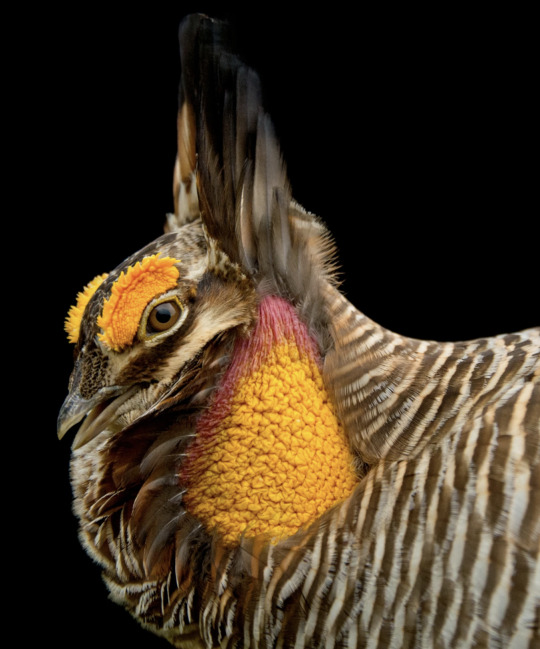
The male greater prairie chicken performs his “booming” display with a group of other hopeful suitors, called a lek. Females gather to judge some eight to 20 males (pictured, an animal at Caldwell Zoo in Texas) at a time as they strut their stuff, usually on a low hill.
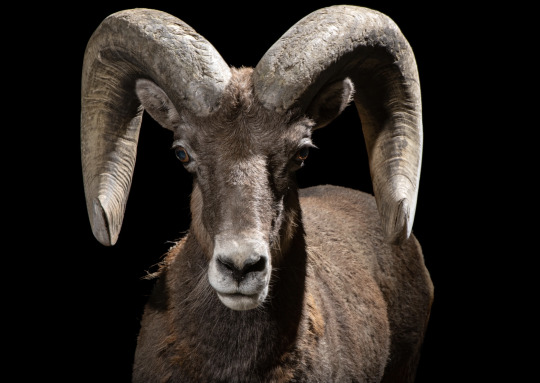
Recent research suggests that animals such as bighorn sheep (pictured, a male Rocky Mountain bighorn sheep at the Denver Zoo) and musk oxen sustain neurological damage as a result of frequent, high-force headbutting.
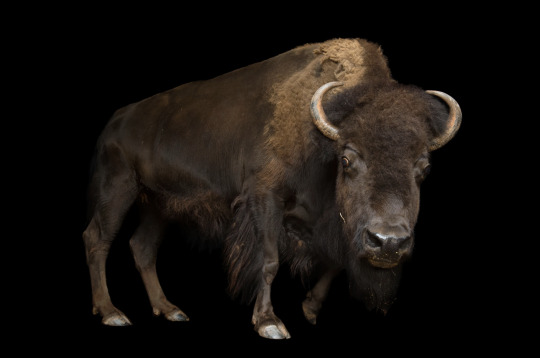
The U.S.’ official mammal, the American bison, is often incorrectly called a buffalo, which only live in Africa and Asia. How to tell the difference? While bison (seen above at the Oklahoma City Zoo) have horns that emerge from the sides of their heads like football goalposts, a buffalo’s horns start at the center of the forehead and swoop to either side like a dramatic middle part.
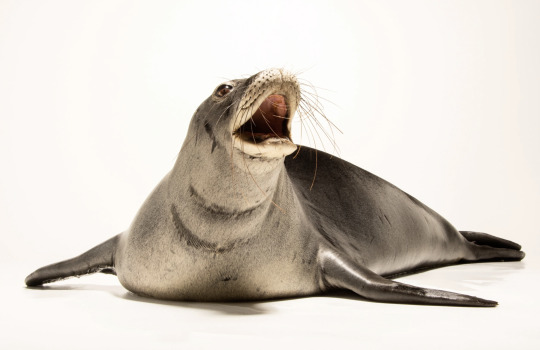
About 1,400 Hawaiian monk seals (pictured, an animal yawns at the Minnesota Zoo) are thought to remain in the wild. They spend approximately two-thirds of their lives in the water, only hauling out on Hawaii’s famous beaches to care for newborn pups and the occasional rest and sunbathing session. They even mate at sea.
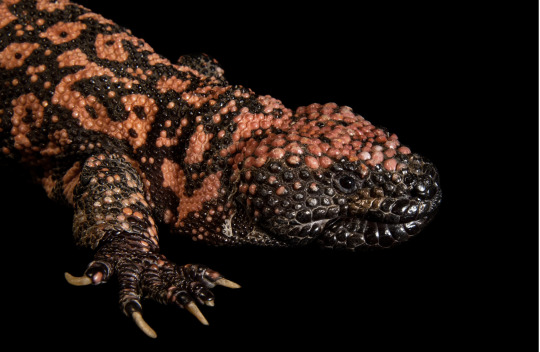
The only venomous lizard native to the United States, the Gila monster is adapted to life in harsh desert conditions. It helps regulate its temperature by airing out its cloaca, a multipurpose orifice the Gila (pictured in Texas' Gladys Porter Zoo) also uses to poop and reproduce. Although it suffers from bad branding, the Gila monster isn’t aggressive.
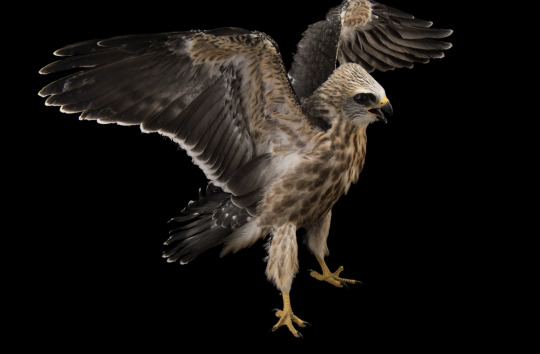
Left: The Mississippi kite is a small and agile bird of prey with a diet mainly composed of flying insects. However, they often build nests next to, or sometimes even containing, wasp nests and appear to get along just fine as neighbors. After raising its chicks, the Mississippi kite makes a long-haul flight to winter in Argentina and Brazil. This animal lives at the Wildcare Foundation, a rehabilitation facility in Oklahoma.
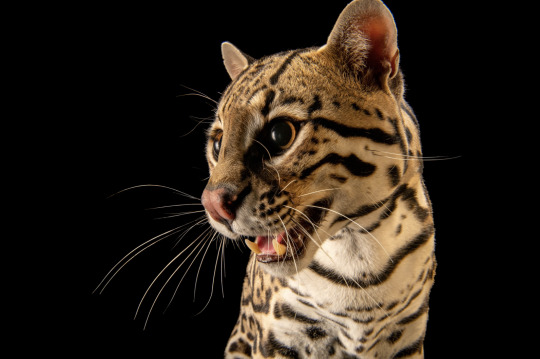
Right: The U.S. is home to only a few dozen ocelots in South Texas. The felines (pictured, an animal at Chile's Santiago Zoo) are double the size of a house cat.
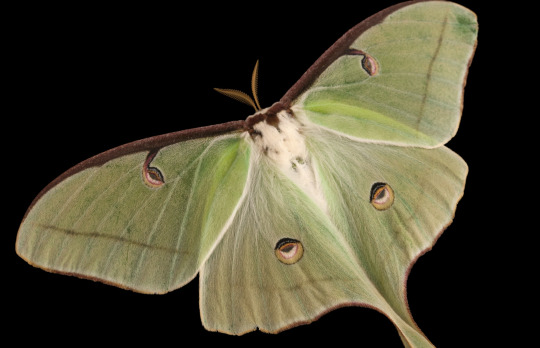
Luna moths (pictured at the Lincoln Children's Zoo in Nebraska) live only seven to 10 days as imago—mature, winged moths. While populations in the northern U.S. go through one generation a year, southern states can see as many as three generations in the same period.

Red wolves are perilously close to extinction, with only 20 to 23 individuals thought to survive in the wild, according to the U.S. Fish and Wildlife Service. That means every birth is precious, from the litter of six born wild in North Carolina in April 2022 to the single pup a captive mother wolf delivered at a Rhode Island zoo two months later. The Great Plains Zoo in South Dakota is home to this pair.
6 notes
·
View notes
Note
hiya!!! santa back again ❄️
your playlist looks awesome! i’ll def have to give it a listen :))
i’m from australia!
nordic practices sound interesting! i don’t know anything about them so if you’d be ok with it i’d love to hear more about that :)
i meant modern music artists - stuff kinda 00s - now. although it’s also interesting to know people’s favourite visual artist as well so feel free to share that also (mine is man ray)
some new questions:
- top 5 songs that you’re listening to right now?
- your top 3 movies of all time?
- 3 favourite animals?
hope to hear from you again soon :3
Australia is cool. I'm a herpetologist (study reptiles/amphibians) and invertebrate zoologist so Australia has so much cool stuff in that realm.
Covering a whole religion/spirituality is hard. I celebrate Yule/Jul with her which is a solstice based celebration. It celebrates a turn toward longer days again and moving toward the end of winter. I'll have to dig up some pictures of the Yule goats we make. If you have any specific questions ask.
Oh.. um. I love music so this will be hard. I will stick to bands that formed in the 2000s and later.
H.E.A.T., Leather Duchess, Orion's Reign, Crash Midnight, Kataklysm, Carach Angren, LA Cobra, Firewind, Heilung, The Midnight Devils, Roadwolf, Sweet & Lynch, Tailgunner, Asomvel, Tengger Cavalry, Tragedy, Wildstreet come to mind off hand but I am sure there are more.
Artists.. I love Dali. More recent art, I love the Bowie art done by Rena Kasuya. The photography of Joel Sartore. Photo Ark is one of my favorite things even if it has a sad reasoning for existing. The purpose is to catalog all life in a way that shows it as beautiful, to get people to be interested and care before they are gone. Another along the same vein is Gregory Colbert, especially Ashes and Snow. A lot of his photography showcases the connection between man and nature/wildlife in an attempt to show the value of being connected and reconnecting with the rest of life. The videos are wildly moving, even more so than the photography which sometimes makes me cry to look at it. I have prints of these two pieces I need to get frames for so I can put them up.


I'm on a huge W.A.S.P., Steve Vai, Stryper, and Metal Church kick right now. The Inviolate album by Steve Vai I have probably listened to everyday for the past week. The album The Dark by Metal Church and especially The Headless Children and Babylon by W.A.S.P. Stryper I am re-deep diving into their discography since I haven't in a long time.
Top movies.. oh that is so hard but as far as go to and love to watch. I would say Terminator 2: Judgment Day, Raiders of the Lost Ark, and the 1981 Clash of the Titans.
I'm a zookeeper.. favorite animals is such a hard question. I love toads, giant insects (the bigger the better), and crocodiles.
What are your answers to those questions? and a few from me..
What are your favorite bands that started before 1990?
Do you have a favorite holiday season song?
Do you like live shows? Gone to any recently?
0 notes
Video
vimeo
Fiat Lux: Illuminating our Common Home from Minds Over Matter on Vimeo.
Obscura was chosen by the Vatican’s Pontifical Council to create a contemporary artistic interpretation of Pope Francis’ Encyclical, “Laudato Si.” The large-scale architectural projection show entitled: “Fiat Lux: Illuminating Our Common Home” was presented as a gift to Pope Francis to celebrate the opening of the Extraordinary Jubilee of Mercy. It was the first time that art has ever been projected onto St. Peter’s Basilica.
“Laudato Si,” means “Praise be to you,” a phrase commonly used by Saint Francis, the patron saint of animals and ecology and Pope Francis’ namesake. In writing his impassioned plea for greater focus on the environment, Pope Francis cited areas of particular concern: pollution and climate change, the lack of clean water for much of the world’s population, and loss of biodiversity.
To bring the pope’s message to life, Obscura created an unprecedented 60-minute show featuring powerful images of humanity diversity and natural beauty from world-renowned photographers and curated by Travis Threlkel and Academy Award-winning filmmaker Louie Psyhoyos (The Cove). Using 21st century art and 50 high lumen projectors, the show was presented as a visual symphony in seven movements.
A crowd of over 200,000 people gathered to watch the show live in the Piazza San Pietro, while 4 million watched via live stream video. Media coverage generated another billion global impressions.
Fiat Lux: Illuminating our Common Home featured the work of some of the world’s most noted humanistic and nature photographers and filmmakers including Sebastiao Salgado and Amazonas Images, Joel Sartore and his Photo Ark series, Yann Arthus Bertrand, David Doubilet, Ron Fricke, Howard Hall, Shawn Heinrichs, Greg Huglin, Chris Jordan, Mark Magidson, Steve McCurry, Louie Schwartzberg and Paul Nicklen. Funding provide by the Li Ka Shing Foundation and Vulcan Productions. Natural sound effects provided by Macaulay Library at the Cornell Lab of Ornithology
Projection and Design: obscuradigital.com
Music: Arvo Pärt: Fratres
OBSCURA TEAM
Travis Threlkel - Chief Creative Officer
Chris Lejeune - Chief Executive Officer / Account Executive
Matty Dowlen - Chief of Production
Andrew Plourde - Senior Technical Director
Marc Melzer - Director of Media Arts
Barry Threw - Director of Interactive
Sean Holt - Director of IT
Emmett Feldman - Senior Art Director
Jennifer Williams - Producer
Ari Ali - Senior Media Producer
Anna Le Breton - Production Coordinator
Doni Dennis - Marketing Director
Tim Digulla - Art Director
Ron Robinson - Art Director
Tony Grisey - Senior Animator
Jim Ellis - Technical Director/3D Animation
Eddy Katt - 3D Animator
Alexi Alexaieff - Technical Artist
Brittnie Diamant - Production Artist
Bryant Place - Interactive Engineer
Harvey Moon - Interactive Engineer
Anton Heestand - Interactive Engineer
Christopher Houchin - Technical Director
Nick Lynch - Technical Director
Diego Novoa - Technical Director
Nathan Houchin - Technical Director
Michelle Grenier - Associate Creative Director
Joshua Brott - Director of Photography
Brandon Moore - Assistant Photographer
Eric Schneider - Purchasing
Ethan Indorf - Editor
Tim McMahon - Editor
Alex Oropeza - Music Director
Harald Boyesen - Sound Design
Lucy Sheils - Sound Design
0 notes